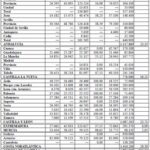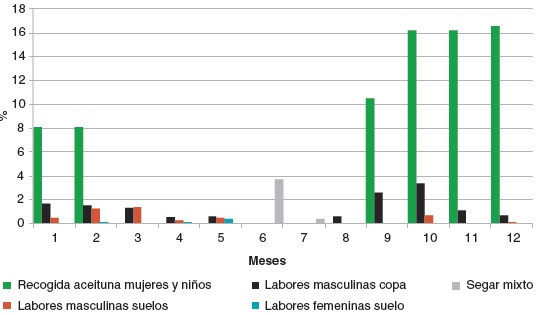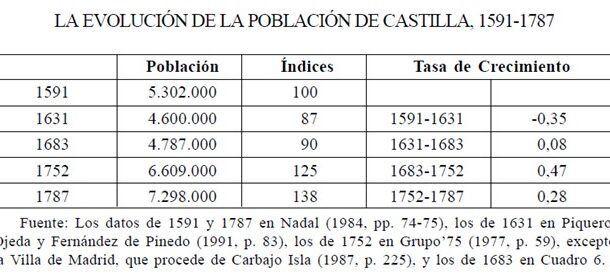
In 1683, by order of Charles II, the Vecindario was published, which counted the inhabitants of the Crown of Castile in order to establish a more up-to-date tax system that would allow for more efficient revenue for the Royal Treasury. Who were considered to be inhabitants? Family units were counted as neighbours, so the data does not reflect the number of inhabitants. In order to obtain the total population, the author applies an average coefficient based on the size of the family. The resource shows this demographic data in column “F”, giving a total population of 4,786,882. By region, the North Atlantic coast, Galicia, Asturias and Cantabria had 1,416,200 inhabitants, the largest population, followed by Andalusia (1,117,880) and Castile and Leon (1,087,202). At the provincial level, Seville, Granada and Toledo were the most inhabited areas with 316,800, 304,100 and 241,240 inhabitants respectively. Of all the regions and provinces, Galicia stands out with 950,000 inhabitants, a significant number in relation to the size and type of population. In contrast, the most depopulated territories were Zamora (39,120), Toro (47,576) and Córdoba (65,480). From 1683 to 1753, the years of the Ensenada Cadastre, the general trend continued; although the population increased in all areas, the imbalances were similar.
Collection: Statistics
Project: 3. Rural world and urban world in the formation of the European identity., 4. Family, daily life and social inequality in Europe.
Chronology: XVII
Scope: Secondary Education, Baccalaureate, University
Resource type: Statistics
Format: Table
Source: Lanza García, R. (2005). "El vecindario de 1683: una fuente inédita para el estudio de la población de la Corona de Castilla", en Revista de Historia Económica, XXIII, nº 2, p. 358.
Language: Spanish
Date: 2005
Owner: Pablo Ballesta Fernández (Modernalia)
Copyright: ©Revista de Historia Económica ©Ramón Lanza García
Abstract: Resource showing the number of inhabitants in the provinces of the Crown of Castile in 1683. In his reconstruction, the author applies a coefficient to obtain the number of inhabitants.
Image
Tags







